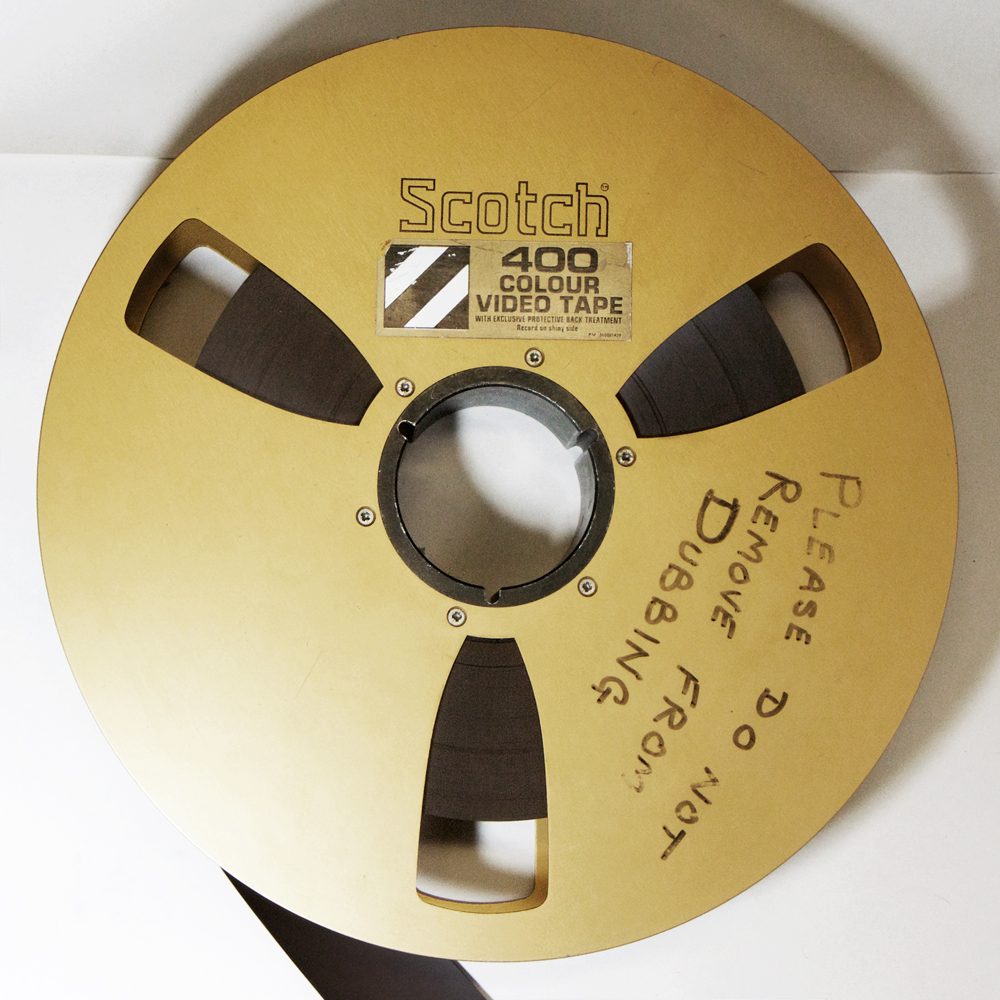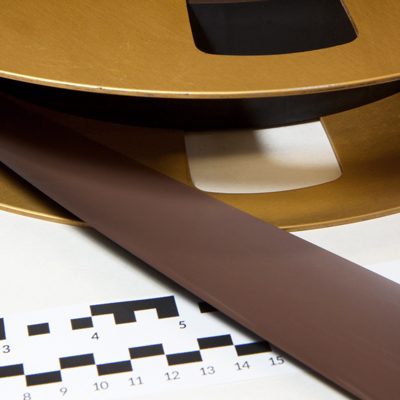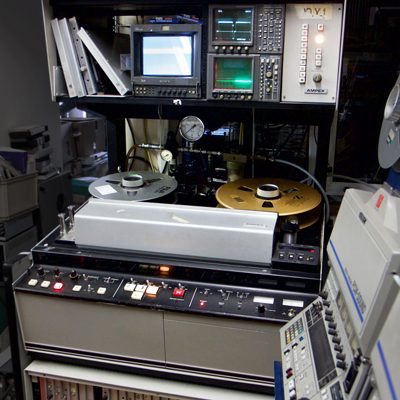introduction to 2 inch quad video tape transfer
2 inch quadruplex video tape was the first practical and commercially successful analogue tape format for recording video. It was developed and released for the broadcast television industry in 1956 by Ampex.
At Greatbear we transfer 2" quadruplex (aka quad) video tape (PAL, SECAM & NTSC) to digital formats.
We offer a range of delivery formats for our video transfers. Following International Association of Sound and Audiovisual Archives TC-06 guidelines, we deliver FFV1 lossless files or 10-bit uncompressed video files in .mkv or .mov containers for archives. We can also produce Apple ProRes mezzanine files for ease of editing. We provide smaller viewing files as H.264 encoded .mp4 files or on DVD. We're happy to create any other digital video files, according to your needs.
We can provide the appropriately-sized USB delivery media for your files, or use media supplied by you, or deliver your files online. Files delivered on hard drive can be for any operating system MacOS, Windows or GNU/Linux and filesystems (HFS+, NTFS or EXT3).
2 inch quad reel-to-reel recordings can vary both in duration and in the extent of physical tape degradation, so we always assess tapes before confirming the price of a transfer.
We offer free assessments - please contact us to discuss your project.
For an introduction to our assessment and treatment processes, please see our guide to "what happens to your video tape".
2 inch quad machines
2 inch quad format variation
2 inch quad tape risks & vulnerabilities
2 inch quad recording history
2” quad was a popular broadcast analogue video tape format whose halcyon period ran from the late 1950s to the 1970s. The first quad videotape recorder made by AMPEX in 1956 cost a modest $45,000 (that’s c.£325,880 in today’s money).
2” quad revolutionised TV broadcasting which previously had been reliant on film-based formats, known in the industry as ‘kinescope‘ recordings. Kinescope film required significant amounts of skilled labour as well as time to develop, and within the USA, which has six different time zones, it was difficult to transport the film in a timely fashion to ensure broadcasts were aired on schedule.
To counter these problems, broadcasters sought to develop magnetic recording methods, that had proved so successful for audio, for use in the television industry.
The first experiments directly adapted the longitudinal recording method used to record analogue audio. This however was not successful because video recordings require more bandwidth than audio. Recording a video signal with stationary tape heads (as they are in the longitudinal method), meant that the tape had to be recorded at a very high speed in order accommodate sufficient bandwidth to reproduce a good quality video image. A lot of tape was used!
Ampex, who at the time owned the trademark marketing name for ‘videotape’, then developed a method where the tape heads moved quickly across the tape, rather than the other way round. On the 2” quad machine, four magnetic record/reproduce heads are mounted on a headwheel spinning transversely (width-wise) across the tape, striking the tape at a 90° angle. The recording method was not without problems because, the Toshiba Science Museum write, it ‘combined the signal segments from these four heads into a single video image’ which meant that ‘some colour distortion arose from the characteristics of the individual heads, and joints were visible between signal segments.’





